I'll try to use your questions as a guide. Send yours to pced@runeman.org
Some people keep everything hidden away. Others like to have what they need "right there", ready for immediate use.
Windows 95 and Windows 98 allow you to create shortcut icons on your desktop to give you quick access to the programs and files that you want.
First a bit of review. When a program is installed to a Win95/98 computer the installer utility typically puts all the program and program support files into a folder somewhere on the hard drive. While doing so, the installer utility also places a shortcut into a folder in the Start menu.
![]()
Click the Start button (usually at the bottom-left corner of the Windows desktop screen) and you get a menu. Choosing the Programs option gives you a second column of menu choices and if the choice has a folder icon, you may need to browse in a third column of choices to get to the program you want.

This illustration shows what I see on my own computer when I go to find the Microsoft Works program by the conventional Start button method.
I use some programs every day. I would rather save my time getting the job started more quickly. I put a desktop shortcut icon where I can see it right away after I turn my computer on.
The first thing I need to do is know the name of the computer program (.exe or executable).
I click the background of the desktop using the right mouse button.
A short set of options for the desktop appear. (This is called a context sensitive menu because the choices apply to the desktop. If I right-click other parts of the screen, other options will appear that apply to the object I clicked.)
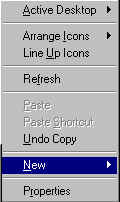
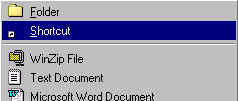
I choose New and select Shortcut.
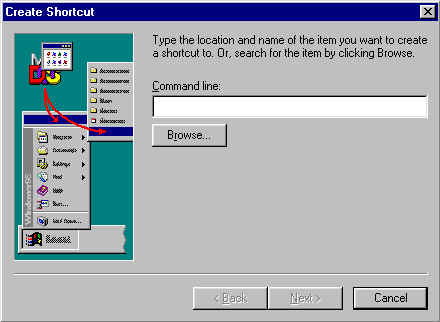
Now I can either type the entire linking path of the program or go looking by clicking the Browse button. Since the linking path can be several layers deep in the C:\ drive, I prefer to browse. Most programs install into the Program Files folder of the C:\ drive.
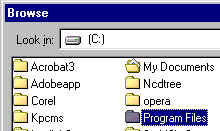
Scrolling to the folders beginning with "M", I find two possible locations for the program execution file. I might have to try first one and then the other. In this case it was MSWorks not the "Suite" folder just above in the next illustration.
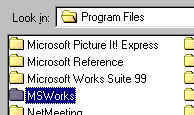
Finally I locate the Msworks.exe program file which I "Open."
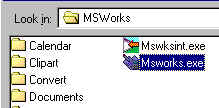
Back in the dialog box, the complex path name to the desired program gets automatically entered by Windows 95/98 into the blank labelled "Command line."

Click the "Next" button and either accept the name or type one you like better into the blank.

When you click the "Finish" button, the new Shortcut (Link) icon appears on the desktop. The next time you want to quickly start the Works program, all you will need to do is double click the desktop icon.

-o[]o-
Personal Computer Education - www.runeman.org
Algot Runeman
Permission granted to print and duplicate.
August 30, 1999